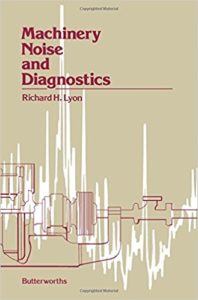Machinery Noise and Diagnostics
Machinery Noise and Diagnostics
Machinery Noise and Diagnostics intended to provide engineers with an understanding of how dynamic forces produce structural vibration in machines and how these vibrations transmitted through the machine and produce radiated sound. The application of these ideas to machinery noise is obvious. If one knows how forces generated, then modifying the mechanisms may result in less excitation at audible frequencies and therefore generate less noise. Or the transmission of vibration may reduced by modifying shafts, bearing supports, frames, or other machine elements by changing compliances or mass loadings at critical locations. Finally, the radiation of sound by the structure may reduced by lowering the vibration amplitudes of housings or panels or by reducing the coupling of these structures to the surrounding air.
The application of these principles described in this book will allow design engineers to develop quieter products or to modify existing products to make them quieter.
You can also Read CWB – Canadian Welding Bureau Certificate Program Modules and Procedures Guide
Machinery Noise and Diagnostics Content![Machinery Noise and Diagnostics Machinery Noise and Diagnostics]()
Machinery noise reduction carried out at many companies as a product design activity or for plant environmental reasons. The engineers who carry out this work generally trained in acoustics, and since their interest is in noise at frequencies that are large compared to machine operating frequencies, their interest in vibration
is also at high frequencies. Noise reduction engineers can have a variety of educational backgrounds, but electrical engineering, mechanical engineering, and physics are the most common. They are most concerned with impact, gear mesh, flexural waves in structures, sound radiation, and sound transmission.
Vibration monitoring also used at many companies to anticipate needs for machine repair. The vibration signatures are most often frequency spectra that encompass several multiples of the machine operating speed to reveal malfunctions such as imbalance, misalignment, and bearing race defects, as shown in Figure 1.1. The frequencies involved tend to be lower than for noise problems. Engineers who design and use diagnostic systems tend to have backgrounds in machine dynamics and vibration. Their education is in mechanical design or engineering mechanics; there is little overlap between this group and noise reduction engineers.


Comments are closed.